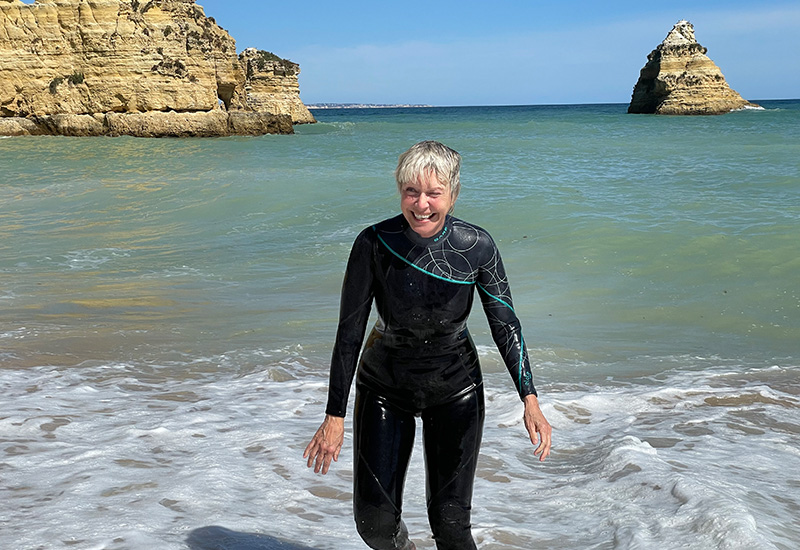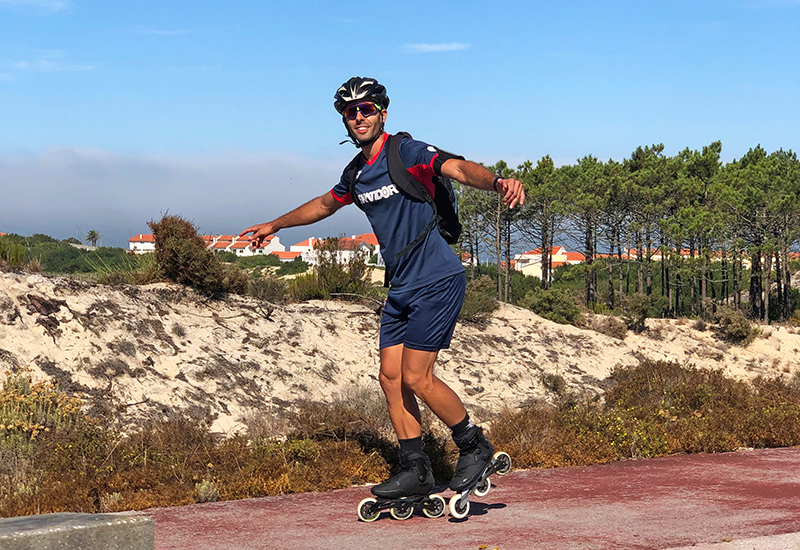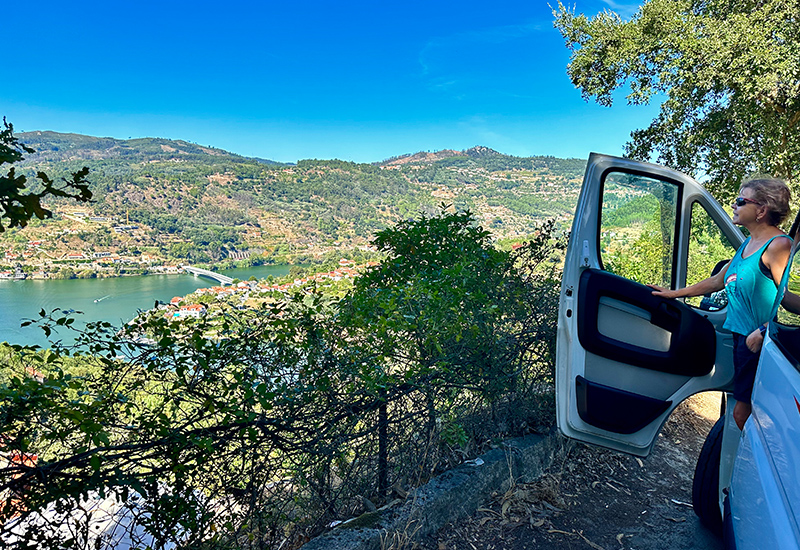I’ve been teased that I’m a delicate “hothouse flower” given my distaste for the brisk waters of the northern Atlantic, even here in one of the southern-most climates of Europe – the sunny warm Algarve.
At its warmest, in August, the Atlantic waters in southern Portugal soar to 22°C/ 71°F. But dial the calendar back to the debut of “beach days” and the averages are considerably colder – in April, it’s 16°C/ 61°F.
I’m not the only one who baulks at frolicking in the less-than-warm waters. Visit any of the picturesque Algarve beaches (and they’re all picturesque!) and you’ll find very few beachgoers at any given time playing, swimming or treading in the water. Oh yes, if you spend enough time on the beach basking in the hot sun, you’ll get overheated and be compelled to run out and dunk in the cold water. But the submersion is usually momentary – enough to get wet and cool off … and then back to the towel.
My idea of an afternoon at the beach is being at one with the water with child-like jumping up and down in the swells, lolling on a float toy, and swimming some laps. But that’s when the water is about 28°C/ 82°F (yes, I’m a super achiever as a hothouse flower!). Those are water temperatures more characteristic of the Gulf of Mexico, the Caribbean and summertime lakes.
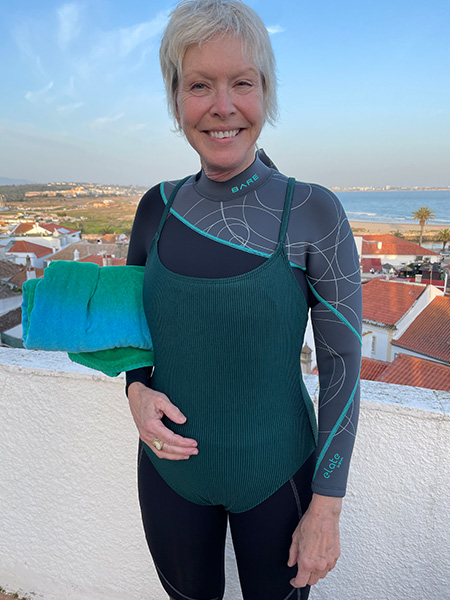
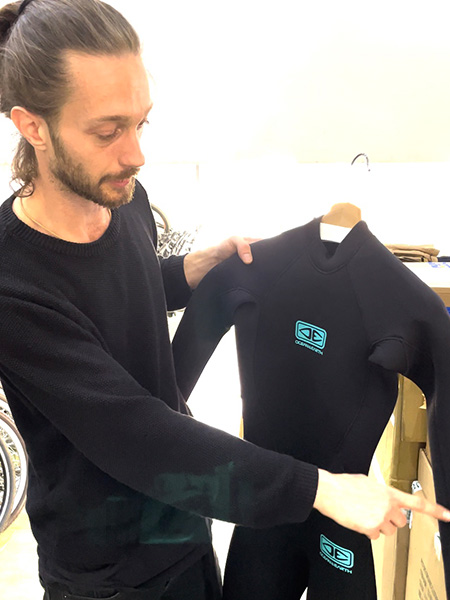
Beyond Bikinis and Boardshorts
So now, as a (happy and satisfied) full-time resident of southern Portugal, my go-to clothing for cavorting in the waves is a wetsuit! I can do everything I do in the warmer water with this thin layer of neoprene between me and the cold. We’re used to seeing surfers and scuba divers wearing wetsuits but not so much with swimmers.
Yet, if you’re like me, wearing a wetsuit over your swimsuit can optimise your beach visits – once you get beyond being surrounded by bikinis and boardshorts, and a few strange gawks (or maybe they’re “why didn’t I think of that!” looks). Joshua Keetley, a water sports specialist at Coast Supply in Lagos, reminds us that none of that matters, “You should be comfortable in your own skin for sure! A lot of people, especially Americans, find the water way too cold.”
Well, this American found the water way too cold, but just the thinnest of wetsuits has made all the difference for me. As Joshua says, “If the wetsuit is just for swimming around, you want something thin enough that still provides you flexibility and no resistance against your body movements.” He adds, “The thicker the wetsuit gets, the warmer it will be, but it will constrict your movement a lot as well.”
What’s Right For You?
The thickness of wetsuits is measured in millimetres (mm). Mine is one of the thinnest made – a 3/2mm, which means the 3mm thickness lines the chest, torso, and legs and the 2mm lines the arms for added flexibility. That’s why there are two numbers. There are wetsuits with thicknesses of up to 5/4mm and 6/5mm … you can imagine how much stiffer and inflexible you’d feel wearing that for swimming.
In order to swim in a wetsuit, it needs to be just right. You want it close fitting to the skin because the suit works by trapping a small layer of water between the skin and the suit, capturing your body warmth.
Of course, maybe you’re one of those who likes the cold water (cold water plunge therapy anyone?). The benefits are said to be multifold, but if you’re not in that camp and are curious how it would feel to swim in a wetsuit, consider simply renting one for your next beach adventure.
